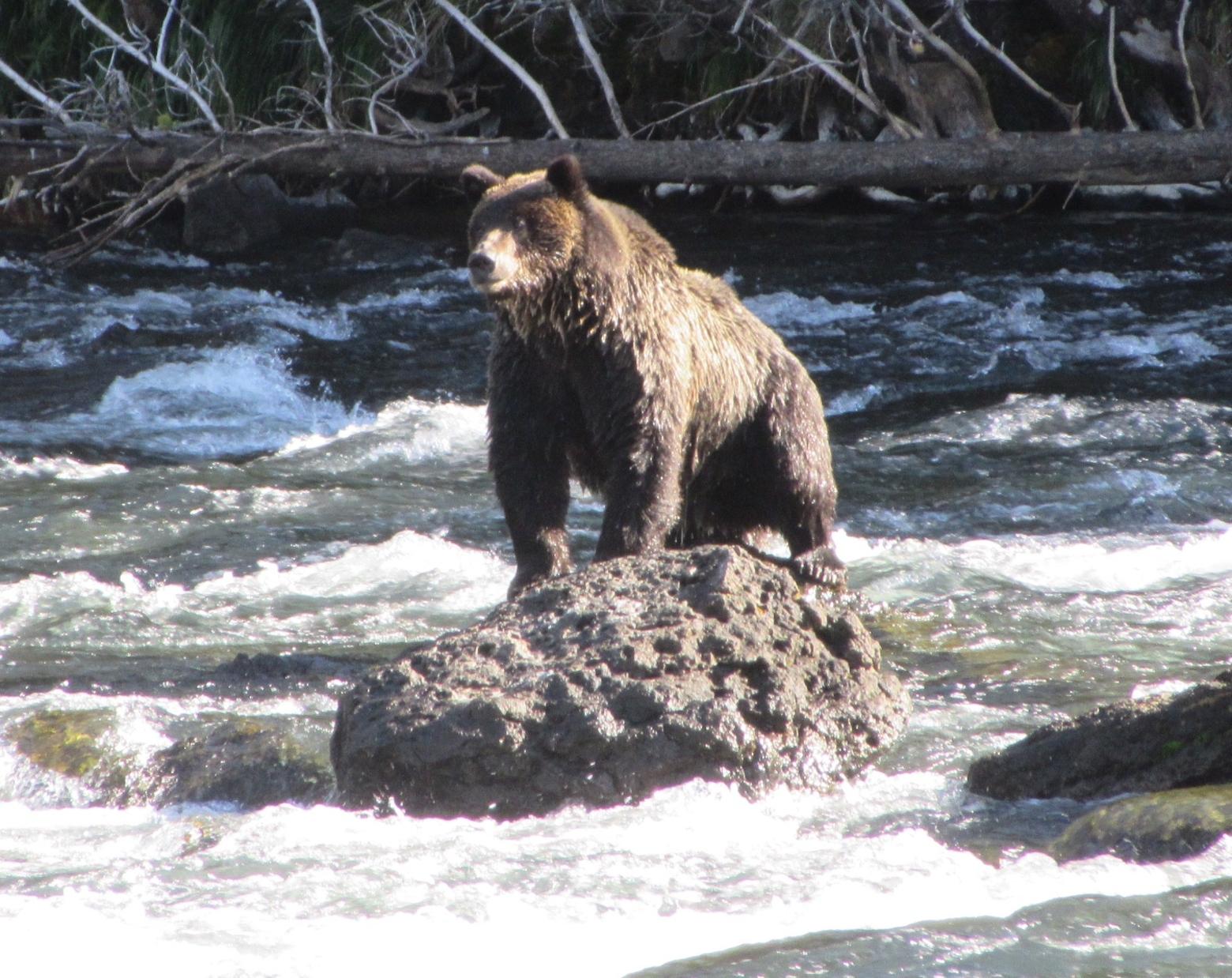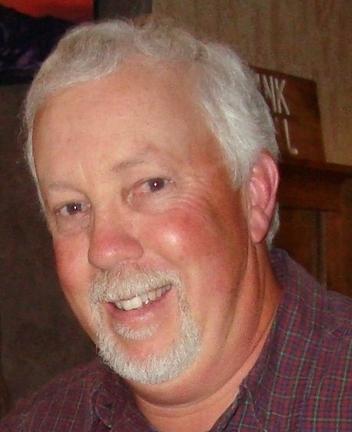Back to StoriesGrizzlies Deserve More Than Bullets
September 23, 2017
Grizzlies Deserve More Than BulletsIn this op-ed, longtime Bozeman conservationist Phil Knight argues against sport hunting of Greater Yellowstone's wildest icons
In the
spring of 1982, fresh off the train from Connecticut, I headed out for my first
backpacking trip in the Rockies. My hiking buddy failed to show up so I went
solo. Of course, I was petrified of bears, and I was pretty clueless, a real
greenhorn.
My first
night camping in the Yellowstone backcountry I slept hardly a wink, thinking
every noise was a bear sneaking into my camp. Next morning I headed deeper into
the wilderness. Cresting a ridge, I stopped to look across a vast green valley.
I spotted some movement.
Raising my
binoculars I saw two grizzly bears. I watched in awe and gratitude as they made
their way across the valley, completely unaware of me. Later I found their fresh
tracks in the spring snow on the trail and decided I would turn around and go a
different direction.
I had just
seen one per cent of the entire population of grizzly bears then still persisting in the Greater
Yellowstone Ecosystem. In 1982 there may have been two hundred grizzlies in a
population that was just starting to recover from their low of about 130 bears
when they were listed as “threatened” under the Endangered Species Act in 1975.
Today there are over seven hundred grizzlies in Greater Yellowstone. And, as of
August 1, 2017, Yellowstone’s grizzly bears are no longer protected under the Act,
pending the outcome of several lawsuits challenging the delisting.
Federal
wildlife managers have
deemed the Greater Yellowstone grizzly bear population “recovered.” Thus they
no longer enjoy federal protection outside the national parks. But are they
really recovered?
Doug Peacock, grizzly bear advocate, filmmaker,
author and researcher, wrote in June that “the population of Yellowstone
(grizzly) bears has not increased for 15 years and has probably declined since
2007 – coincidentally the date of the commencement of sudden death of whitebark
pine trees in Yellowstone.”
The U.S.
Fish and Wildlife Service already handed over bear management to the states
once before, in 2007. A decade ago, the decision was reversed by a court
decision that said the agency did not fully consider the loss of whitebark pine
on bear reproduction and mortality related to the collapse of that food source, thus elevating conflicts with humans.
Many
biologists and conservationists question the decision to delist grizzly bears.
I will not get into too much detail here, since numerous legal challenges to
delisting are playing out in court.
However, these
bears have many things going against them. Climate change is starting to wreak
havoc on their ecosystem, and can only get worse. The grizzlies of Greater
Yellowstone are an “island” population denied the luxury of dispersing to other
ecosystems or interbreeding with other bears populations.
Human population and
associated development is exploding in Greater Yellowstone, the fastest-growing
region in the US. Bears in the heart of the ecosystem already have lost
whitebark pine and cutthroat trout, and are forced to hunt more elk and deer
for protein, bringing them into more conflict with humans, including hunters
with guns.
And now,
with delisting, the states of Montana, Wyoming and Idaho are chomping at the bit to
open a trophy-hunting season on grizzly bears, one of the rarest mammals in the
Lower 48 (while British Columbia is phasing out trophy hunting of brown bears).
Come on. is this really the best we can do?
Grizzlies to
me and many others are the embodiment of wildness. They encapsulate much of
what we admire, and yes much of what we fear, about wilderness and big wild
animals.
When I saw those two grizzlies in 1982, I knew instinctually that I
was in the presence of something rare – free roaming, untamed, dangerous
animals living self-determined lives in the land where they belong. I was
humbled, scared, and intimidated, but I was also thrilled and excited. This was
a half hour I would remember all of my life.
Of what
value are wild bears? Aren’t they just a dangerous nuisance? They injure, kill
and even eat people. Why not hunt them, put the fear of god in them again, and
make some money off of them? Give people a challenge? Offer hunters a chance to
bag a spectacular trophy? Well, to me
trophy hunting is a terrible waste of a magnificent animal.
"Of what value are wild bears? Aren’t they just a dangerous nuisance? They injure, kill and even eat people. Why not hunt them, put the fear of god in them again, and make some money off of them? Give people a challenge? Offer hunters a chance to bag a spectacular trophy? Well, to me trophy hunting is a terrible waste of a magnificent animal."
Alive and
free-roaming, grizzly bears belong to all of us—and none of us. As a stuffed
trophy in someone’s den, they belong to that one person. No one else can ever again
enjoy watching that bear or learn from it, never see it wrestle with its cubs,
chase elk, dig for biscuit root, toss rocks in search of moths, drive a wolf
pack away from a kill, or swim a river.
Nor does
anyone “need” a dead grizzly bear, unlike an elk or deer that a hunter has
killed to feed his or her family. Killing a grizzly – unless in self-defense –
is purely an act of selfishness.
We are such
clever monkeys, thinking we can manipulate and decide the fate of every aspect
of the natural world, from grizzly bears to soil microbes to genetically modified
food crops to weather to rivers.
Yet we keep receiving wake up calls from the
natural world (witness this year’s insanely destructive Atlantic hurricanes)
that no, we are not in charge, no we do not have it all figured and no, the
natural world does not care about us.
We need big
dangerous wild animals like grizzlies to remind us of this – the hubris that will
only bring us closer to catastrophe. Humans are indeed a part of the natural
world.
Like it or not, we can be killed by nature, but we cannot control it. As
Peacock also said, if there is not something big enough and mean enough to kill
you, it is not true Wilderness.
Grizzly
bears show a great amount of restraint towards humans. If they were out there
seeking to stalk and kill us all the time there would be carnage. Far more
people in the US have been killed by vending machines – or by falling out of
bed - than by grizzly bears. Of course, vending machines don’t drag you screaming
from your tent in the middle of the night.
"Alive and free-roaming, grizzly bears belong to all of us—and none of us. As a stuffed trophy in someone’s den, they belong to that one person."
Large wild
animals around the world are diminishing and disappearing, falling victim to
the ever-growing human horde. Poaching, the bush meat trade, road kill, habitat
loss, hunting, and killing in self-defense has reduced global wildlife
populations by half in forty years. Do the math, where will our wildlife be in
another forty years? With ten billion people on the planet?
How about we
back off, let grizzly bears – and wolverines, wolves, lynx, bison, and many
other wild critters for that matter – live their lives without being shot,
trapped, skinned, harassed, poisoned, stuffed and posed as a vicious snarling
beast in some rich person’s trophy mansion.
Opening a
hunting season on grizzly bears shows a paucity of spirit, a view of the world
in black and white where everything is either useful to man or a danger to man.
It’s long past time we allowed some things, such as bears and millipedes and
giant sequoias, to exist for their own sake, to seek their own destinies and
pursue their own lives.
EDITOR'S NOTE: Phil Knight, who lives in Bozeman, Montana, has been a conservationist for many decades. Besides being a leader in promoting protection of wilderness and old-growth forests in the U.S. and abroad, he is an avid outdoor recreationist, author of the book Into Deepest Yellowstone, and leader of nature tours.
In its October 2017 issue, National Geographic magazine has a story titled Should We Kill Animals To Save Them?
Related Stories
January 6, 2019
Grizzly Matters: A Recap Of Court Actions Involving Greater Yellowstone Bears
When it comes to true recovery for America's most famous bruins, the focus is not on numbers but biological connectivity
October 26, 2017
Lessons From A Hunter Twice Attacked By A Grizzly Bear
Todd Orr's misadventure with a sow grizzly offers insight for anyone—hunter or hiker—heading into bear country. Biggest take home: bear spray...
September 25, 2017
Autumn Interlude: Painting Grizzly Bear Mother 399
Grizzly 399 is the most famous modern bear in the world. Sue Cedarholm paints the matriarch as she guides her cubs...



